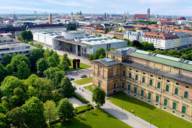
18 museums and exhibition centres, over 40 galleries, six universities and numerous cultural institutions: the Kunstareal! With its museums and universities, the Kunstareal Munich in Maxvorstadt is one of the most important cultural centres in Europe. A detailed overview.
Between Königsplatz and Theresienstraße, you can experience cultural history that stretches back more than 5,000 years: from the glorious high civilisation of Egypt to antiquity and the present day. A large number of museums and exhibition centres – including the Pinakotheken, the Städtische Galerie im Lenbachhaus and the Glyptothek – as well as dozens of galleries are located close together here.
- The history of the Kunstareal
- The Kunstareal München today
- The most important museums at a glance
- A look into the future of the Kunstareal
“I want to turn Munich into a city which will do Germany honor, so that nobody will know Germany without having seen Munich.”
These words uttered by the artloving monarch King Ludwig I of Bavaria (1786 -1868) introduced a concept of art politics which turned the Medieval town on the Isar river in the 19th century into a leading metropolis of art in Europe. Ludwig continued the collector’s passion of his predecessors by acquiring objects of art at the antique excavation sites in Greece and the art centers of Rome and Florence in competition with major European collections.
Munich residents were flabbergasted when their King had Classicist monuments put up in the meadows and floodplains in front of the city gates, and thus gave rise to the sobriquets “Athens on the Isar” and “Florence on the Isar”: Königsplatz with its Glyptothek as well as the Alte and Neue Pinakothek art galleries make Munich a top-class metropolis of culture.
A total of 18 museums and exhibition centres, over 40 galleries, six universities and numerous cultural institutions are now grouped together in the Kunstareal. The office manager Laura Schieferle explains: “There is hardly a building on the 500 x 500 metre site that does not house one cultural institution or another.“ The art-historical significance of the Glyptothek with one of the largest collections of ancient sculptures should be emphasised. The newly designed inner courtyard of the museum (with adjoining café) is also a wonderful oasis of calm and is used as an open-air stage for ancient theatre in summer.
Visitors can stroll through and experience 5,000 years of art and cultural history presented in an amazing variety from the City Gallery in Lenbachhaus, the State Museum of Egyptian Art and the Documentation Center for the History of National Socialism, which was opened in 2015, to Museum Brandhorst and Pinakothek der Moderne gallery.
And there is also a lot going on in the public space. In addition to the Pinakothek museums and larger museums, art events and light installations in public spaces also attract attention – making the Kunstareal München a spontaneous and free experience. In the warmer months, students meet daily on the Pinakothek meadows to picnic or study together, and yoga, tai chi, kickboxing and tango classes are held regularly. The cafés and restaurants in Maxvorstadt also make the Kunstareal a lively place of diversity full of new hotspots that are constantly popping up everywhere.
The Alte Pinakothek displays outstanding works of European painting from the 14th to the 18th century. Many of the 700 or so paintings on display are among the highlights of art history. On display are works by Dürer, Raphael, Titian, El Greco, Rubens, Rembrandt and Boucher. The museum also has the largest Max Beckmann collection outside the USA.
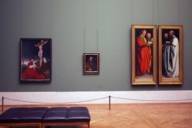
“From Goya to Manet“ is the motto of the Neue Pinakothek: here you can discover paintings and sculptures from the late 18th, 19th and early 20th centuries. The museum is home to world-famous paintings and sculptures such as Vincent van Gogh's Sunflowers and Claude Monet's Water Lilies, as well as works by Egon Schiele, Gustav Klimt and Auguste Rodin.
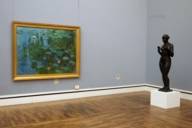
From Picasso to Warhol to Le Corbusier – the Pinakothek der Moderne is one of the largest collections of modern and contemporary art, architecture and design in Europe. Four museums – the Sammlung Moderner Kunst, the Neue Sammlung, the Architekturmuseum and the Staatliche Graphische Sammlung – are located under the roof of the Pinakothek der Moderne. The best thing about it: pay once for admission to all of them.
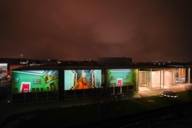
The Städtische Galerie im Lenbachhaus in the historic villa of the prince of painters Franz von Lenbach is one of the most beautiful places in Munich. Since Gabriele Münter's donation in 1957, the museum has housed the world's largest collection of Blauer Reiter art. There is also contemporary art to discover!
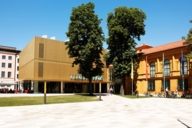
With well over 100 works by Andy Warhol, the collection of the most famous Pop Art artist can hardly be compared with any other European collection. The focus on over 170 works by the American artist Cy Twombly is also unique in the world. Works by Bruce Nauman and Sigmar Polke, Louise Lawler and Cady Noland, Martin Kippenberger, Jeff Koons and many more can also be discovered at the Brandhorst.
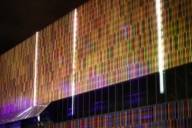
Most of the exhibits in the Glyptothek come from the collection of King Ludwig I, whose enthusiasm for ancient art was awakened when he was crown prince. Highlights include the busts of Emperor Nero and Emperor Augustus, the Barberine Faun and the newly designed inner courtyard of the museum.
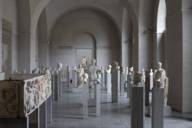
The Staatliche Antikensammlung (State Collection of Classical Antiquities) is home to an outstanding collection of Greek vases with world-famous pieces from the 6th and 5th centuries BC. Also to be discovered: small antique sculptures made of bronze or terracotta, delicate goldsmith's work and masterpieces of ancient glassblowing.
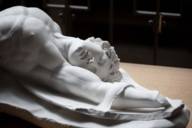
The permanent exhibition “Munich and National Socialism“ extends over four floors with large-format images, documents and media installations, as well as changing artistic interventions and a learning forum in the basement that offers the opportunity to deepen knowledge. The NS Documentation Centre is located on the former site of the NSDAP party headquarters.
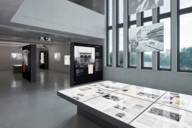
5000 years of ancient Egyptian art and culture! The Egyptian Museum in Munich is the only museum building outside of Egypt that is dedicated exclusively to ancient Egyptian exhibits. The exhibition rooms are completely underground, which makes the visit even more special.
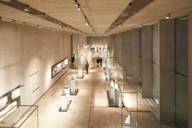
An overview of all the museums, furniture stores, galleries and universities on the site can be found here.
What King Ludwig I announced 200 years ago is still true today: with its Kunstareal, Munich is one of the most important centres of art and culture in Europe and is unique in its combination of art, culture and knowledge. This is particularly evident in its development: the scientific institutions such as the Museum Mineralogia, the TU München (Technical University) with its highly renowned Faculty of Architecture or the “Neue Sammlung – The Design Museum“ in the Pinakothek der Moderne all contribute to combining progress, science and art. “The Kunstareal is constantly changing, which is why things will always continue here,“ summarises Laura Schieferle.